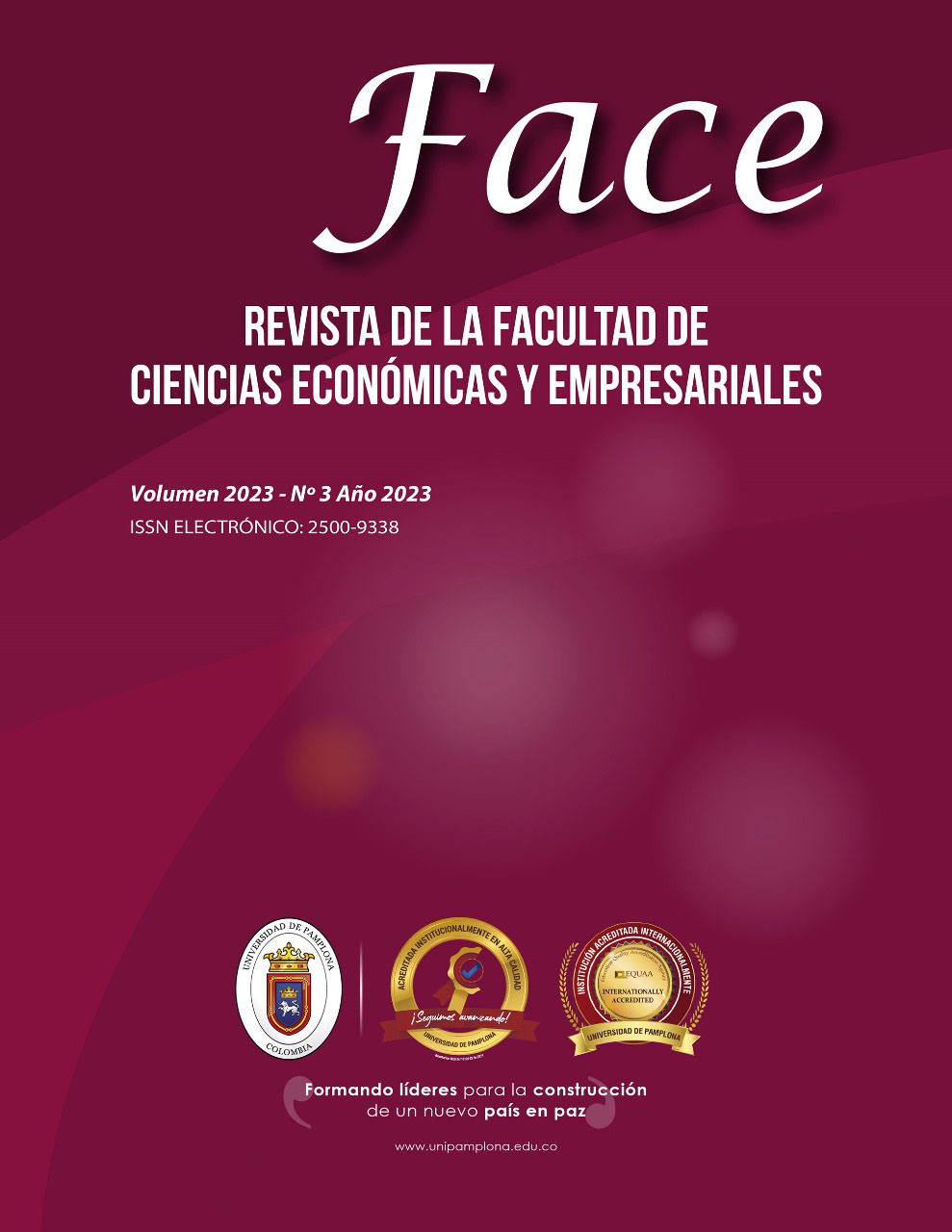Analysis of the survival of Mexican family businesses through the three-dimensional evolutionary model.
DOI:
https://doi.org/10.24054/face.v23i3.2618Keywords:
fortress, weaknesses, evolutionary, threedimensional, family, companyAbstract
In this research, three models were analyzed: The model of the three circles, the three-dimensional evolutionary model and the model of the five circles, of which the main model contributed to carrying out an analysis from the birth of the company, until its continuity in the process. change of representatives, which in most cases is very complicated for companies, also in the involvement of people who play a specific role within the organization and who, thanks to the model, can be classified in each area of this and, above all, set a valuable role for them, promoting growth, not only of the company but also of the individual participants in it, managing this entire process effectively with the threedimensional evolutionary model since it is the most complete and easy to understand.
Downloads
References
Amat, J. (2000). Modelo de los cinco círculos. La continuidad de la empresa familiar. En J. Amat, La continuidad de la empresa familiar (pág. 32). Barcelona: S.E.
Friedrich, G. W. (s.f.). TEORIA GENERAL DE SISTEMAS. Recuperado el 2023, de UNAM : http://www.sisal.unam.mx/labeco/LAB_ECOLOGIA/Ecologia_y_evolucion_files/XI.%20TEORIA%20GENERAL%20DE%20SISTEMAS.pdf
Gersick, D. M. (1997). Generation to generation: Life cycles of the family business. Boston : Harvard Business School Press.
Gersik K, L. I. (2003). Modelo Evolutivo Tridimensional. El cambio. Volumen 8. Hershon, B. y. (2016). Empresas de familia. Recuperado el 2023, de https://www.redalyc.org/journal/646/64650087006/html/
INEGI. (2021). INEGI. Recuperado el 2023, de INEGI: https://www.inegi.org.mx/programas/dn/2021/
John Armour, H. H. (julio de 2009). HARVARD. Recuperado el 19 de octubre de 2021, de The Essential Elements of Corporate Law: https://virtualhorizon.buap.mx/pluginfile.php/1296860/mod_resource/content/1/1.%20THE%20ESSENTIAL%20ELEMENTS%20OF%20CORPORATE%20LAW.pdf
Marcos, S. (2015). Éxito y tipología de la empresa familiar: implicaciones. España: Universidad de la Rioja.
Molina, A. I. (2012). EL MODELO DE EMPRESA FAMILIAR: Los cuatro pilares fundamentales. Revista de Investigación.
Molina-Parra, P. B.-B.-M. (2016). Empresas de familia: conceptos y modelos para su análisis. Pensamiento y gestión. En P. B.-B.-M.
Molina-Parra, Empresas de familia: conceptos y modelos para su análisis. Pensamiento y gestión (págs. 116-149). Barranquilla, Colombia: Red de Revistas Científicas de América Latina. Norte, U. d. (04 de agosto de 2016). Pensamiento y Gestión. Recuperado el 16 de enero de 2023, de Artículos: https://www.redalyc.org/journal/646/64650087006/html/
Porter M, E. (2017). Ser Competitivo. Madrid, España: Deusto.
Quejada, R. F. (2016). Empresas familiares:conceptos, teorías y estructuras. . Revista Escuela De Administración De Negocios.
Published
How to Cite
Issue
Section
License
Copyright (c) 2023 FACE: Revista de la Facultad de Ciencias Económicas y Empresariales

This work is licensed under a Creative Commons Attribution-NonCommercial-ShareAlike 4.0 International License.





